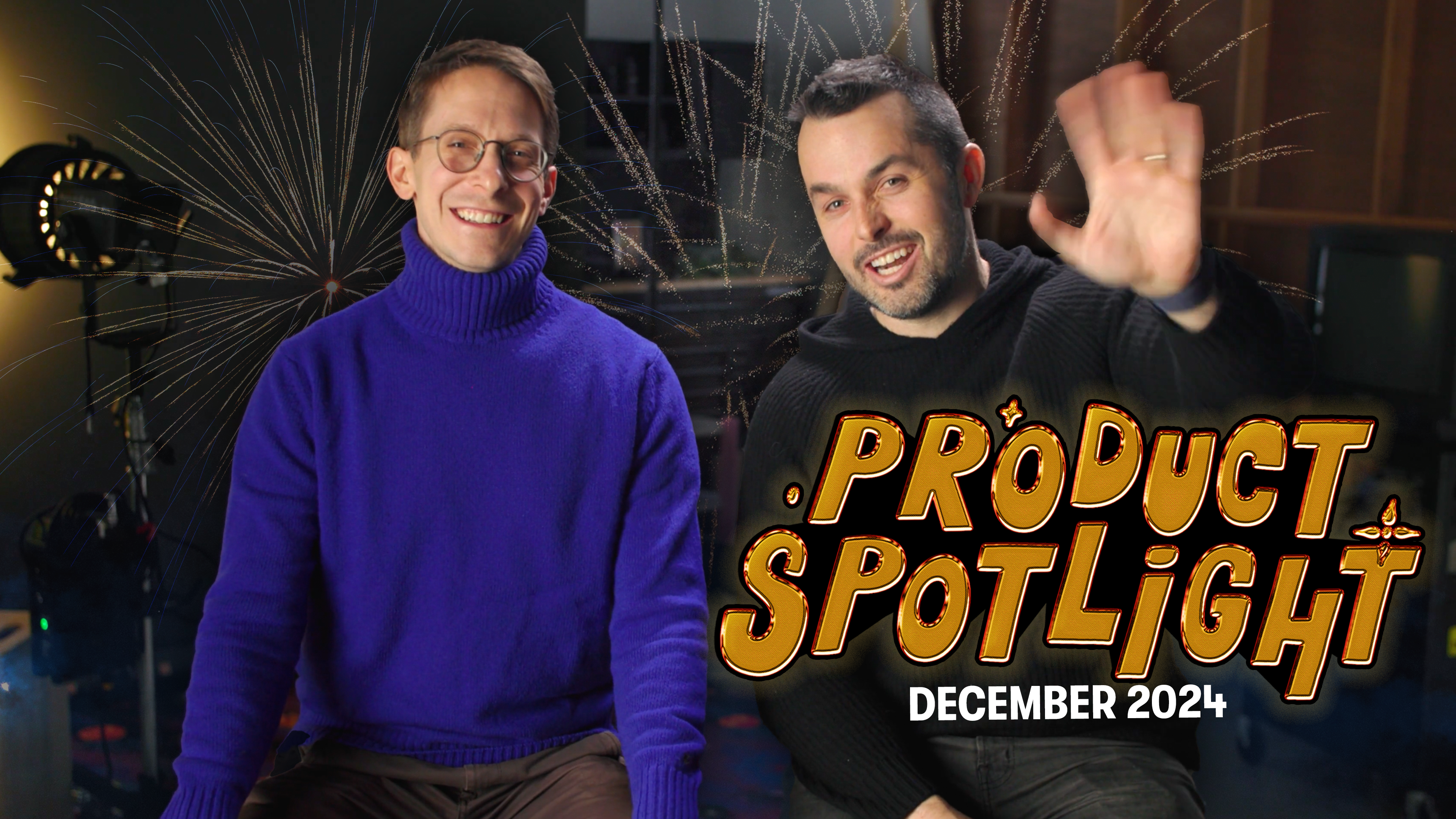The Familiarity Principle: Building Relationships With Video
December 17, 2015
Topic tags
Kristen Craft
Business Development
Every marketer knows that just getting product exposure is hugely important. It’s a scientifically proven phenomenon. Psychologist Robert Zajonc was the first to demonstrate, in the lab, what he coined the familiarity principle: when people are repeatedly exposed to certain stimuli, they come to develop a preference for them.
“How you like me now?”
For instance, in one study at the University of Toronto, college students were exposed to previously unfamiliar tropical fruit juices and asked to judge them. The researchers found that the students rated the juices in proportion to how frequently they were tasted. It was mere exposure that had these students developing preferences — the basis of the familiarity principle — and it works the same way with marketing.
Product placement is the primary avenue through which marketers have accessed the power of the familiarity principle, but we actually seem to be hitting a point of diminishing returns when it comes to its effectiveness. The problem is one of overexposure: now that we’re all constantly bombarded by images of products and advertisements, marketers need to do more to actually stand out.
That’s why it’s time to start thinking about cutting through the noise. You can’t just hide behind your product. You need to step up your familiarity principle game and get face-to-face exposure with the people that you want to reach without overstepping your bounds. The underlying psychological mechanism is still valid — you just have to access it properly.
Building a personal connection
Companies have found all kinds of ways to break through the noise and reach out to consumers on a personal level. General Mills, for example, appears to have taken advantage of the height of their target demographic when it comes to selling cereal. When a parent and their child are wandering down the cereal aisle, they’re bombarded from both sides by images of cheesy mascots beaming down at them.
A Cornell lab found that brand trust was 16% higher and brand connection was 28% higher when the Trix rabbit made eye contact, and though it sounds strange, participants in the study also indicated that it made the cereal taste better.
The same phenomenon, in fact, has been used to make Facebook ads more effective, in pop-up holistic health experiments, and to help public speakers connect with their audiences. Eye contact cuts through the noise and suggests trust, friendliness, and a sense of humanness. It’s a very powerful technique, but we can push even further into the realm of human connection if we take advantage of an even more powerful tool: video.
“Eye contact cuts through the noise and suggests trust, friendliness and a sense of humanness.”
Scaling the personal connection with video
A lot of companies start out forging deep connections with their customers by doing things that don’t scale. Whether it’s handwriting thank you notes or calling to check up on their customers, some of the projects that startups take on to build this kind of human connection with their users cannot be sustained over the long term.
As companies grow, however, this personal connection always seems to be one of the first things to disappear. Not enough time. Not a high enough priority. Whatever. One thing I’ve learned at Wistia is that it is very possible to scale the human side of your business.
The reason that handwritten notes are great is because they have that personal touch, but over time that personal touch is also what makes it nearly impossible to scale. You can’t spend hours a day writing little notes to your customers.
But videos also have that personal touch. Because of the depth of the medium, you can express the full range of human emotions, explain things in great clarity, and generally appeal to the viewer’s humanity. And, best of all, one video can speak to thousands of customers.
Case study: Zendesk
When Zendesk realized that the phrase “Zendesk alternative” was starting to get real traction on search engines, they decided that they wanted to get their name into that stream of results.
“We knew that people searching for Zendesk alternatives were probably familiar with our brand already, so we wanted to show them why we’re a great company to work with,” said Creative Director Matthew Latkiewicz. “We hoped that if we gave them something tongue in cheek, it would be hard for them to be mad.”
It comes back to the familiarity principle: they wanted to take advantage of its effects and promote a friendly vision of their brand without having it come off the wrong way. After all, these people were not sold on becoming Zendesk customers. Yet. The challenge was to show them something endearing and valuable that might make them change their minds or even share it without breeding contempt.
Thus was born Zendesk Alternative, a down-on-their-luck Seattle grunge rock band:
Other companies might have used that video to explain the benefits of their product over its competitors to show curious consumers why they don’t want an alternative after all.
Zendesk, on the other hand, crafted a storyline based around the idea of Zendesk’s CEO purchasing a grunge band, commissioning them to write a concept album about customer service, and subsequently putting the lead singer in a moral dilemma about his artistic authenticity.
It’s a gripping, funny narrative that gives you a great sense of what the people who work at Zendesk are all about. They’re creative, imaginative, and they have musical talent! All in all, they’re awesome, and you should feel comfortable and confident working with them.
When a company grows to the point that searching its name in quotes with “alternative” tacked on is relatively common, it’s time to remind people why they came to you in the first place. It’s not all about price, or features: it’s about the personal connection that they feel when they think of your company, and that’s what the Zendesk Alternative video was all about demonstrating.
“It’s not all about price, or features: it’s about the personal connection that they feel when they think of your company.”
And it looks like it’s succeeded, because when you search for “Zendesk alternative” today, this 90’s grunge rock band comes up as the first organic search result.
Case study: Wipster
Wipster is a video review and approval platform that allows you to comment on and annotate individual frames and events on the fly. It’s for production companies and individual videographers who are collaborating either with their teams or clients and need to get quick, productive feedback on their work.
It sounds boring, but Wipster’s actually taken a process that used to be horribly tedious and turned it into a workflow that’s simple and even fun. To demonstrate that core value, it’s easiest to use the very thing that Wipster’s all about — video.
They did just that. They shot a 30-second product demo and made it the first thing you could interact with on their homepage, going for maximum exposure. But they also went the extra mile and made a video unlike any you’ve seen before.
Rollo Wenlock, Wipster’s founder, stands in the center of the frame, looking into the camera, and he explains what the product does. But he’s not alone; behind him, dancers race in and out of the shot at his whim, the music is adjusted, and whole parts of the script are cut as a friendly editor deems them “too boring.”
It’s engineered to appeal to the familiarity principle. Not only do you get to be face-to-face with the CEO and founder of the company, but the cloying or overbearing parts of the video are literally edited out before your eyes. It’s a short and sweet 30-second video designed to show you what the product does. But it also creates that human connection.
CEO Rollo Wenlock is personable, funny, and clearly devoted to his product. You get the sense that he wants you to use it, and that he wants you to succeed.
Case study: Litmus
Litmus just raised $49M in October, and they have a lot of expansion ahead of them. To get the best candidates possible for all the openings they have now, it’s more important than ever that they help people understand what Litmus is all about. People need to feel, when they see your job ad, like they might fit in and belong at your company.
Your average text-based ad on Indeed or Craigslist tries to give some description of what your business is like, but it’s always going to fail. Why? Because so much of what makes your workplace unique is intangible.
With video, you have a really powerful tool for conveying what a workplace is like without having to use a single word. Make no mistake: A job ad is not that different from a product you’re trying to sell, and you need to make sure you’re giving a comprehensive, 360-degree picture of the precise opportunity you’re putting out there.
Litmus’s video is simple in its execution — just clips of their employees going through different parts of their days, set to music — but it says a lot. Where other companies might talk through the perks they offer, or show each one off in detail, Litmus takes you through everything in a kind of whirlwind tour.
The familiarity principle kicks in again. By showing you the members of the Litmus team going through different parts of their day, the video shows you that the company feels like a community and even makes you feel like a part of it. By the end, you don’t feel like these are strangers; you feel like they might well be your coworkers.
Stepping up your game
Scaling the emotional, human side of a business is difficult. If you try to craft a genuine relationship with your customers, you’ll often find that you have a hard time quantifying what you’re doing. Attribution models are not yet a total science. You rarely have any way of knowing whether a customer converted because of a phone call or a handwritten note or a personalized email.
Video, and Wistia in particular, changes that. With video, marketers can get a deep understanding of how the familiarity principle is playing into their conversion rates — it’s all in the metrics. From minutes watched to where viewers stopped watching to where they clicked through, these new tools can help marketers not only identify valuable leads, but also comprehend what they’re doing right and what they’re doing wrong.
“With video, marketers can get a deep understanding of how the familiarity principle is playing into their conversion rates — it’s all in the metrics.”
Some companies are more up to speed on this technique than others, and they’re already seeing the benefits. Using a scalable method of creating human connections means not only finding the touchpoints that create converting customers, but understanding how it’s done and having the data to prove it.






